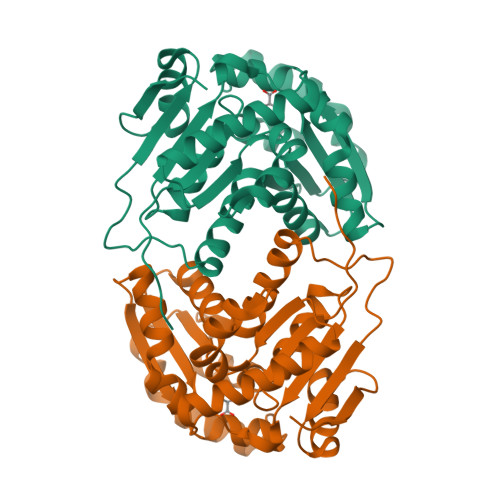Exploitation of Structural and Regulatory Diversity in Glutamate Racemases
Lundqvist, T., Fisher, S.L., Kern, G., Folmer, R.H.A., Xue, Y., Newton, D.T., Keating, T.A., Alm, R.A., De Jonge, B.L.M.(2007) Nature 447: 817
- PubMed: 17568739
- DOI: https://doi.org/10.1038/nature05689
- Primary Citation of Related Structures:
2JFN, 2JFO, 2JFP, 2JFQ, 2JFU, 2JFV, 2JFW, 2JFX, 2JFY, 2JFZ - PubMed Abstract:
Glutamate racemase is an enzyme essential to the bacterial cell wall biosynthesis pathway, and has therefore been considered as a target for antibacterial drug discovery. We characterized the glutamate racemases of several pathogenic bacteria using structural and biochemical approaches. Here we describe three distinct mechanisms of regulation for the family of glutamate racemases: allosteric activation by metabolic precursors, kinetic regulation through substrate inhibition, and D-glutamate recycling using a d-amino acid transaminase. In a search for selective inhibitors, we identified a series of uncompetitive inhibitors specifically targeting Helicobacter pylori glutamate racemase that bind to a cryptic allosteric site, and used these inhibitors to probe the mechanistic and dynamic features of the enzyme. These structural, kinetic and mutational studies provide insight into the physiological regulation of these essential enzymes and provide a basis for designing narrow-spectrum antimicrobial agents.
Organizational Affiliation:
AstraZeneca Global Structural Chemistry, AstraZeneca R&D Mölndal, SE-431 83, Mölndal, Sweden.



















